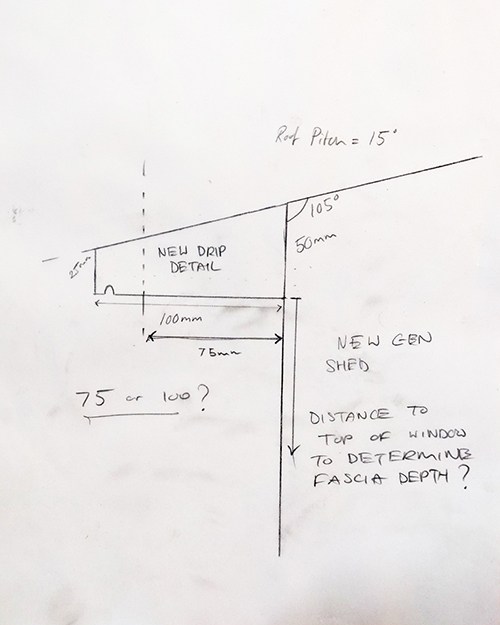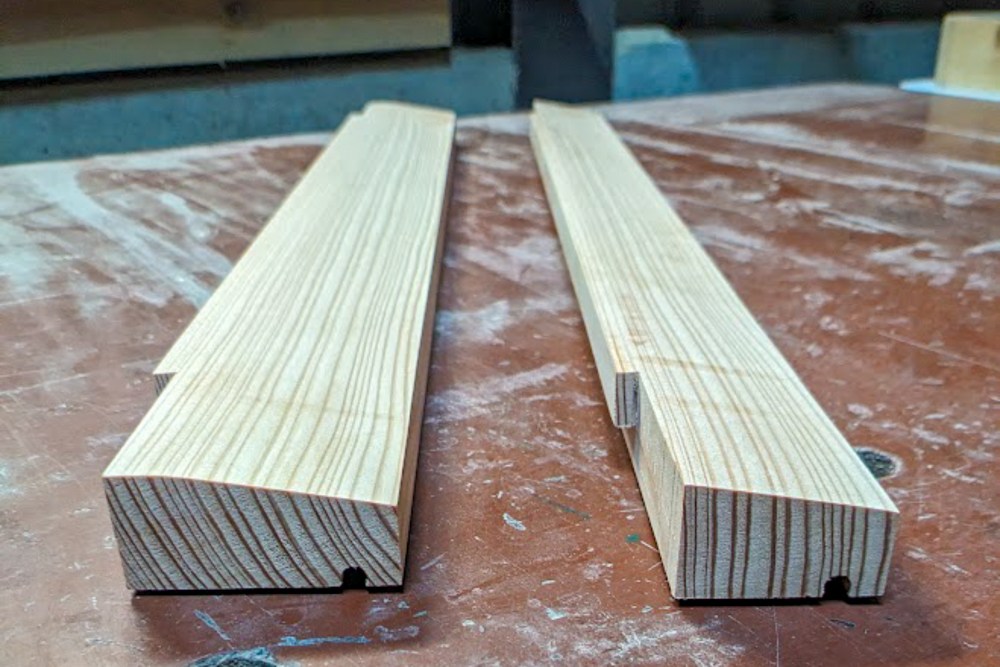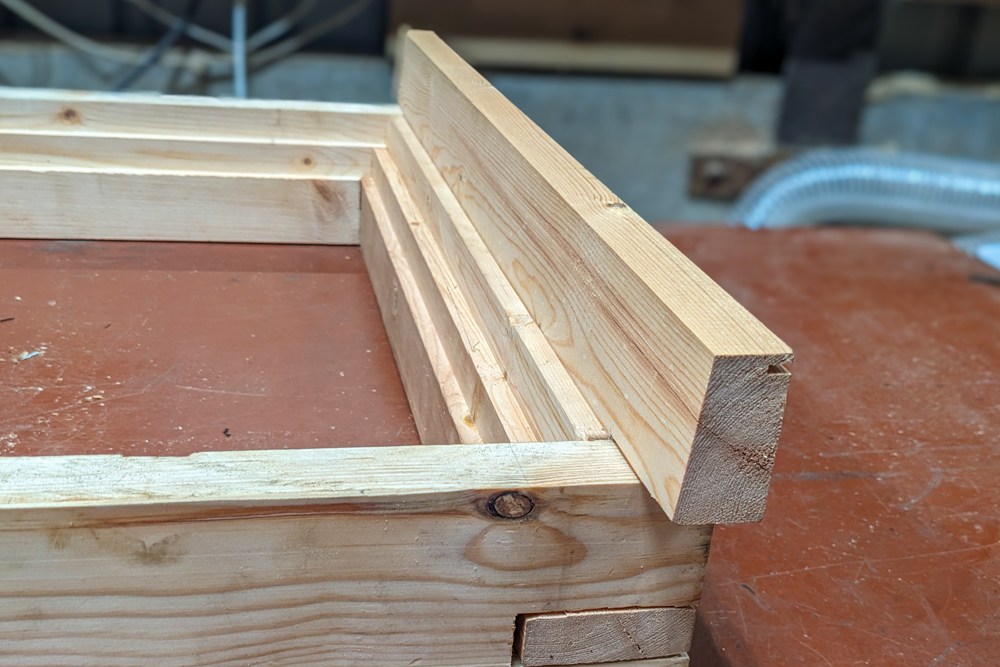Managing the melt: tackling water and drips at Port Lockroy
06/11/2025
In the final part of our series exploring the ongoing conservation work at Port Lockroy, our Head of Buildings and Conservation, Ruth Mullett, talks drips and grooves.
Water: the constant challenge
At Port Lockroy, water shapes everything – from the snow that blankets the roofs to the meltwater that seeps beneath the historic timber structures each summer. But in recent years, changing conditions have made managing that water a critical focus of conservation work.
Over the past few seasons, the team has observed more precipitation and more melt, causing more frequent and sustained water pooling around the buildings and windows. This persistent dampness promotes fungal activity and accelerates timber decay. It’s clear that improvements to drainage and water flow are needed to protect the fabric of the site.
Designing for durability
One key improvement our carpenters will be making this season is a subtle but important addition to the new generator shed (the shop): an extension to the eaves. This small wedge of timber will follow the same angle as the roof and will be covered with roofing felt, blending in with the existing structure.

The plans for the rainwater goods (UKAHT/Jim Brearley-Ratcliffe)
On the underside of this timber wedge, a narrow groove – known as a drip – will be cut. This clever detail helps break the surface tension of water, encouraging it to drip away from the building rather than run back along the underside of the eaves. By directing rain and meltwater further from the walls and windows, it helps protect the building’s most vulnerable surfaces from moisture damage.
Drips are a traditional and time-tested solution to a familiar problem. Unlike gutters, which can struggle in high winds, this simple groove is robust and effective in the harsh Antarctic environment.

The gable window header overhang (left) and sill (right) (UKAHT/Jim Brearley-Ratcliffe)
It’s a minor change in appearance, but a major improvement in how the building handles water.
“A simple timber wedge with a groove might sound like a small detail, but it’s exactly the kind of careful, thoughtful change that will protect this extraordinary place.” – Ruth Mullett, Head of Buildings and Conservation, UKAHT
This refinement is part of a broader water management strategy for Port Lockroy. The team is also exploring how similar interventions could help safeguard other heritage sites across the Antarctic Peninsula.
Building resilience for a changing climate
UKAHT’s recent climate change risk assessment has revealed a trend of faster deterioration at the Trust’s more northerly sites, with similar effects expected to move southwards over time.
By improving how buildings manage moisture now – through better drainage, drip detailing and rainwater solutions – the Trust is strengthening the resilience of its heritage buildings against future change.

The new sill detail attached to the new windows (UKAHT/Jim Brearley-Ratcliffe)
The approach at Port Lockroy is both site-specific and forward-looking. While each heritage site faces unique environmental pressures, lessons learned here will guide preventative work elsewhere, helping to mitigate damage before it occurs.
“Where we know we don’t have proper water management in place, we’re getting ahead – improving detailing to prevent problems before they happen.”
– Ruth Mullett, Head of Buildings and Conservation, UKAHT
Working with the elements
Of course, carrying out this work in Antarctica comes with its own challenges. Weather and wildlife both dictate what can be done and when. High winds, persistent rain, or nearby nesting penguins can halt outdoor work for days at a time.

Carpenters Jim and Graham at work on Bransfield House last season (UKAHT/Dale Ellis)
The conservation team adapts by prioritising tasks based on conditions – focusing on what’s safe and feasible each day. It’s a careful balance between protecting the site, safeguarding the team, and respecting the wildlife that calls Port Lockroy home.
Despite these challenges, progress continues. Each small improvement – every new drip or groove – contributes to the long-term preservation of this remarkable site.
Protecting Port Lockroy for the future
Managing meltwater may seem a modest task, but it’s central to keeping Port Lockroy standing. As the environment evolves, so too must the techniques that protect it.
This work on water management is a reminder that conservation isn’t just about preserving history – it’s about adapting intelligently to ensure that history survives.
As part of our three-year mission to protect Port Lockroy, the ionospherics room will remain closed for safety for the next two seasons. However, visitors can still explore it virtually through the UKAHT website, and the museum will remain open throughout the season.
This period of work also provides a valuable opportunity to study and share the stories connected to the site. As objects are carefully packed and unpacked, the team is learning even more about the history and science of Port Lockroy – knowledge that will be shared through our public engagement programmes.
Ruth Mullett, Head of Buildings and Conservation
If you love a place, protect it
Eighty years in Antarctica have left their mark on this beloved site. Now, Port Lockroy urgently needs restoration to protect its future.
Please donate today.
How your donation will help
We’re seeing more frequent and intense precipitation, both as snow and rain. The historic buildings at Port Lockroy were never designed to withstand this. Meltwater is eroding foundations and damaging walls; the warmer, wetter conditions are causing rot and algae on timber; and internally, this is speeding up the deterioration of artefacts.
In short, the changing climate is not a distant threat; it’s a present-day challenge.
What conservation plans do we have?
- Pack and relocate artefacts to a safe space
- Complete extensive structural works, replacing and strengthening historic floor timbers
- Paint and protect the iconic boatshed
- Replace wooden windows
- Re-felt areas of the historic roof
- Install a climate change mitigation system to prevent water runoff from damaging exterior timbers
What will this work do?
- Secure the immediate safety of Port Lockroy
- Provide long-term protection against climate and environmental damage
- Keep this unique site open as a source of inspiration and connection to Antarctica
Other ways to donate
Please contact our Head of Development, Camilla Johns, via:
Email: camilla.johns@ukaht.org
Post: UK Antarctic Heritage Trust, High Cross, Madingley Road, Cambridge CB3 0ET, UK
Phone: +44 (0)1223 355 049

